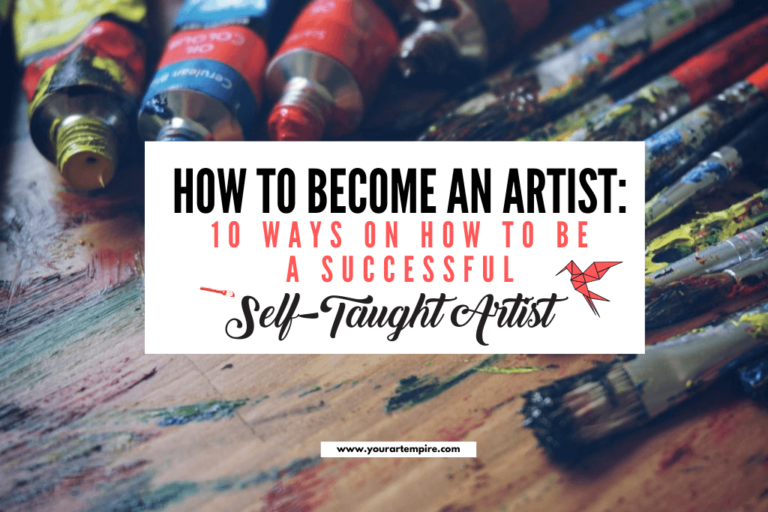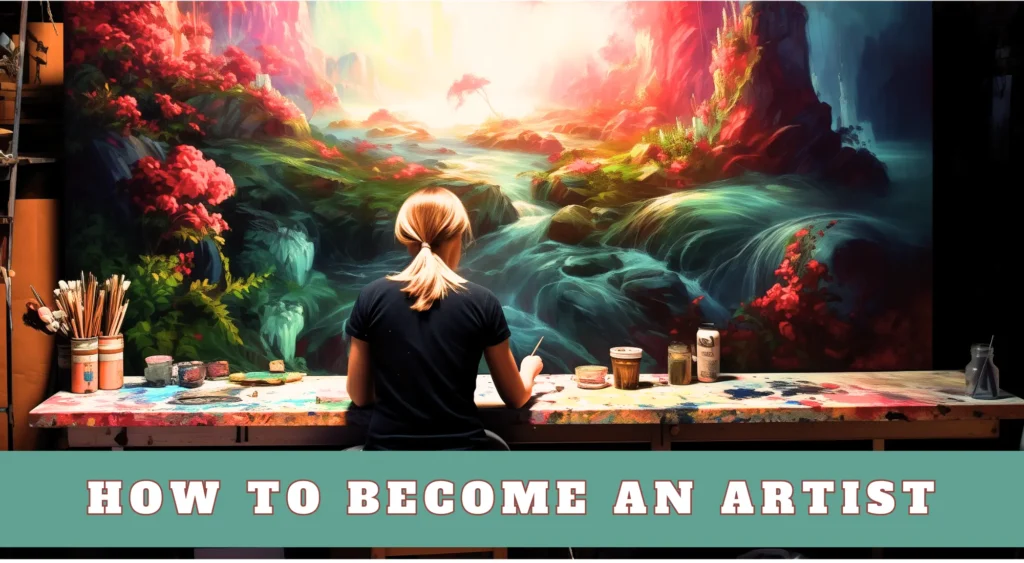Are you a photographer or artist looking to make your mark in the visual world? Getty Images might be the perfect platform for you! Known for its vast collection of high-quality stock images and videos, Getty is a go-to resource for creatives, businesses, and media outlets alike. In this post, we’ll explore what it means to be a Getty Images artist and how you can start sharing your work with a global audience.
Understanding the Role of a Getty Images Artist

So, what exactly does it mean to be a Getty Images artist? Well, it’s more than just uploading your photos; it’s about being a part of a vibrant community of creatives. Here’s a closer look at the role and what you can expect:
- Creativity Unleashed: As a Getty Images artist, you have the freedom to express your unique vision. The platform embraces various styles—from stunning landscapes to dynamic street photography.
- Global Exposure: Your work will be showcased to millions of potential buyers around the world. This is a fantastic opportunity to gain recognition and potentially reach new clients.
- Quality Over Quantity: Getty Images places a high emphasis on the quality of submissions. It’s essential to present your best work and adhere to their guidelines to increase your chances of acceptance.
When you join Getty Images, you’ll also find yourself in a supportive network of fellow artists. Engaging with this community can inspire you, lead to collaborations, and help you stay updated on industry trends.
Additionally, being a Getty Images artist offers the potential for a steady income stream. You earn royalties each time your images are purchased, which can be quite lucrative if your work gains traction. For many, this creates a fulfilling career path where passion meets profit.
However, it’s not just about sharing pretty pictures. Understanding market demands is crucial. Research trending themes, styles, and subjects that resonate with buyers. For instance, images focusing on sustainability, diversity, and wellness are increasingly in demand.
In conclusion, becoming a Getty Images artist is an exciting journey that requires creativity, commitment, and an understanding of the visual market. With the right approach and dedication, you can turn your passion into a successful venture!
Also Read This: Comparing Pricing and Licensing Options for Imago Images and Its Competitors
3. Steps to Start Contributing to Getty's Collection

So, you’re ready to take the plunge and start contributing to Getty Images? Fantastic choice! Here’s a step-by-step guide to help you navigate the process smoothly:
- Understand Getty's Requirements: Before you even think about submitting your work, familiarize yourself with Getty Images’ specific requirements. They look for high-quality, original content that captures a variety of subjects. Check out their contributor guidelines to get a clear idea of what they expect.
- Create an Account: Head over to the Getty Images contributor portal and set up your account. You’ll need to provide some basic information and agree to their terms. This is your launchpad to becoming a Getty Images artist!
- Build Your Portfolio: This is where your creativity shines! Curate a collection of your best work that aligns with Getty’s style and themes. Include various subjects—landscapes, portraits, and candid shots. Diversity is key, so don’t be afraid to showcase your range!
- Submit Your Images: Once your portfolio is ready, it’s time to submit your images. Make sure to follow the submission guidelines closely. This includes choosing the right keywords and providing descriptions that accurately reflect your work.
- Be Patient and Open to Feedback: After submission, it may take some time for Getty to review your work. They might provide feedback or ask for revisions, which is totally normal. Stay open to constructive criticism; it’s all part of the learning process!
- Stay Engaged: Keep track of your submissions and stay active in the community. Follow trends, join forums, and connect with other contributors. The more engaged you are, the more you can learn and grow as an artist.
By following these steps, you’ll be well on your way to contributing to Getty Images. Remember, persistence is key—don’t get discouraged if you don’t hit it big right away!
Also Read This: How Do Getty Images Work: Understanding Licensing, Pricing, and Contributor Benefits
4. Tips for Creating High-Quality Images

Creating high-quality images is essential for catching the eye of Getty Images and potential buyers. Here are some tips to elevate your photography game:
- Invest in Good Equipment: While you don’t need the fanciest gear to start, a decent camera and lens can make a significant difference. Consider models that offer good low-light performance and versatility.
- Master Lighting: Lighting can make or break a photo. Aim to shoot during the golden hours—early morning or late afternoon—when natural light is soft and warm. If you're shooting indoors, use diffusers to soften harsh light.
- Composition Matters: Pay attention to the rule of thirds, leading lines, and symmetry. These compositional techniques can help draw the viewer’s eye and create more dynamic images.
- Edit with Care: Post-processing can enhance your images, but keep it natural. Use editing software to adjust exposure, contrast, and color balance, but avoid over-editing as it can detract from the authenticity of your work.
- Stay on Trend: Research current trends in stock photography. What are people looking for? Candid lifestyle shots, diverse representation, or environmental themes? Tailoring your portfolio to include these can boost your chances of acceptance.
- Practice, Practice, Practice: The more you shoot, the better you’ll get. Experiment with different styles and subjects. Don’t hesitate to step out of your comfort zone; some of the best shots come from unexpected situations!
By following these tips, you’ll not only create high-quality images but also build a portfolio that stands out on Getty Images. Happy shooting!
Also Read This: How to Download Photos from Getty Images Without Watermark for Your Website
5. Navigating the Submission Process

So, you're ready to take the plunge and submit your work to Getty Images? Fantastic! But hold on—before you hit that "submit" button, let’s break down the submission process step by step. This is a crucial stage where your creativity meets the professional world, and a little preparation can go a long way.
First things first: create an account. Head over to the Getty Images contributor portal and sign up. You'll need to provide some basic information and possibly verify your identity. Once your account is set up, it’s time to focus on your portfolio.
Your Portfolio Matters
- Curate a collection of your best work. Quality over quantity is key here.
- Make sure your images are technically sound—focus on composition, lighting, and resolution.
- Try to showcase a variety of styles and subjects to appeal to a broader audience.
After you’ve prepared your portfolio, it’s time to submit your images. Getty Images has specific guidelines, so pay attention! For instance, they typically prefer images that are high resolution—at least 300 DPI for print quality—and free of any watermarks or logos.
Keywording and Metadata
Next up is the metadata. This is where you’ll provide essential information about your images. Think of it as giving your photos a voice!
- Keywords: Use relevant keywords that describe your image. This will help your work get discovered.
- Titles and Descriptions: Be descriptive but concise. Make sure to highlight what's unique about your work.
Once you’ve uploaded your images and added your metadata, take a breath—you're almost there! Before final submission, double-check everything. Is your work in line with Getty's standards? Are your keywords relevant? A little diligence here will save you a lot of time later.
Finally, hit that submit button and wait for feedback. The review process can take anywhere from a few days to a few weeks. Remember, patience is key! If your work is accepted, congratulations! If not, don’t be discouraged. Use any feedback you receive to improve your future submissions.
Also Read This: Understanding the Cost of an Adobe Stock License
6. Understanding Licensing and Royalties
Now that you’ve navigated the submission process, let’s dive into the nitty-gritty of licensing and royalties. This is where the business side of being a Getty Images artist comes into play. Understanding these concepts will not only help you maximize your earnings but also protect your creative rights.
What is Licensing?
Licensing refers to the legal permission you give users to use your images in specific ways. Getty Images operates primarily on a licensing model, which means clients pay to use your work under certain conditions. Here are the main types of licenses you should be aware of:
- Royalty-Free (RF): Clients pay a one-time fee to use your images repeatedly without additional payments. However, they can’t resell or distribute your images.
- Rights Managed (RM): This license is more restrictive. Clients pay based on the specific use of the image (like duration and territory). It can lead to higher earnings per image but requires more negotiation.
Understanding Royalties
Royalties are the payments you receive each time your work is licensed. Here’s how it typically works:
- For RF images, you usually earn a percentage of the sale price. The more popular your images, the more you can make.
- With RM images, the earnings can vary widely based on the usage, but they often yield higher payouts.
Keep in mind that Getty Images takes a commission from your sales, so your royalty percentage will reflect that. It’s important to review the agreement you signed to know exactly how much you’ll earn and under what conditions.
Finally, stay informed about industry standards and trends. The more you understand about the market, the better equipped you’ll be to make smart decisions about your work and earnings.
By grasping the intricacies of licensing and royalties, you’ll be positioned to not only showcase your artistic talents but also to thrive as a Getty Images contributor. Remember, knowledge is power!
Also Read This: Explore How to Buy from Shutterstock
7. Building Your Portfolio for Success
Creating a standout portfolio is crucial for becoming a successful Getty Images artist. Your portfolio is your visual resume, showcasing your unique style and expertise. Here are some tips to help you build a compelling collection of images:
- Choose Your Niche: Focus on a specific theme or niche that resonates with you. Whether it’s food photography, travel, or lifestyle, having a cohesive style makes your portfolio memorable.
- Quality Over Quantity: Aim for high-quality images that reflect your best work. It’s better to have a smaller number of exceptional photos than a large collection of mediocre ones.
- Diversity in Content: While focusing on a niche, include a variety of shots within that theme. For example, if you’re into lifestyle photography, mix candid moments with styled shoots.
- Professional Editing: Your images should be polished and professionally edited. Invest in editing software or consider taking an online course to enhance your skills.
- Regular Updates: Keep your portfolio fresh by regularly adding new work. This not only showcases your growth as an artist but also keeps potential buyers engaged.
Don’t forget to include a brief artist statement in your portfolio. This gives viewers insight into your artistic vision and what inspires your work. When presenting your portfolio, consider creating an online gallery, which can be easily accessed by potential clients and Getty Images curators.
Lastly, seek feedback from fellow photographers or mentors. Constructive criticism can be invaluable in refining your portfolio and ensuring it resonates with your target audience. Remember, your portfolio is a living document, and as you evolve as an artist, so should your collection!
8. Staying Updated on Trends in Stock Photography
The world of stock photography is constantly evolving, influenced by cultural shifts, technological advancements, and changing consumer preferences. Staying updated on these trends is essential to remain competitive and relevant as a Getty Images artist. Here are some strategies to keep your finger on the pulse:
- Follow Industry Leaders: Keep an eye on successful stock photographers and agencies. Their work can provide insights into current trends and styles that resonate with buyers.
- Engage with Online Communities: Join forums, social media groups, or platforms like 500px and Instagram. Participating in discussions and following hashtags related to stock photography can give you real-time insights into what’s trending.
- Research Market Reports: Organizations like Shutterstock and Adobe frequently release reports on stock photography trends. These resources can help you understand what types of images are in demand.
- Attend Workshops and Webinars: Look for photography workshops, webinars, or conferences focusing on stock photography. These events often highlight emerging trends and offer valuable networking opportunities.
- Experiment and Adapt: Don’t be afraid to experiment with new styles or subjects. If you notice a rising trend, consider how you can incorporate it into your work while maintaining your unique voice.
In addition, pay attention to seasonal trends. Certain themes may be more popular at different times of the year, such as holidays, back-to-school, or summer activities. By aligning your shoots with these trends, you can boost the chances of your work being noticed.
Ultimately, keeping up with trends isn’t just about chasing what’s popular; it’s about finding a balance between current demands and your artistic identity. By continuously learning and adapting, you'll create relevant, eye-catching content that buyers can't resist!
 admin
admin








